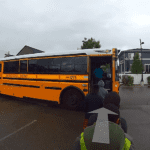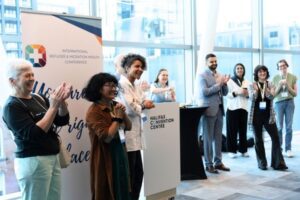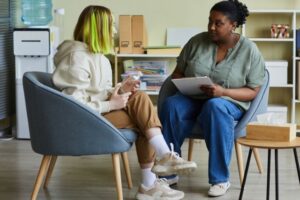This blog post describes a training and technical assistance (TTA) experience with the International Rescue Committee’s (IRC) Sacramento office, in which the Emerging Technology team at Switchboard collaborated with service providers, a local high school, and Afghan newcomer youth. Using design thinking and the co-creative process, they filmed a 360 immersive video to support the orientation process for newly arrived youth. Switchboard’s Emerging Technology team provides TTA on the integration of emerging technologies into resettlement programming, with a current focus on virtual reality (VR). Co-creation is at the heart of this exciting new TTA area.
When most of us think about the newcomer experience, virtual reality (VR) is not usually what comes to mind. However, this technology can be incredibly valuable in the resettlement process, precisely because it can visually prepare newcomers with language barriers for what they can expect in their new surroundings. This is especially useful for newcomer youth, who are drawn to new technologies and receptive to learning with them.
Building Immersive Environments to Prepare for School
The International Rescue Committee’s Sacramento youth team aims to support youth voices and create generational change through on-site, after-school activities, including the Elevate youth leadership program. Elevate gathers 12 Afghan youth, ages 14 to 24, to identify areas of concern in the community and execute specialized programming, including for substance abuse education and prevention.
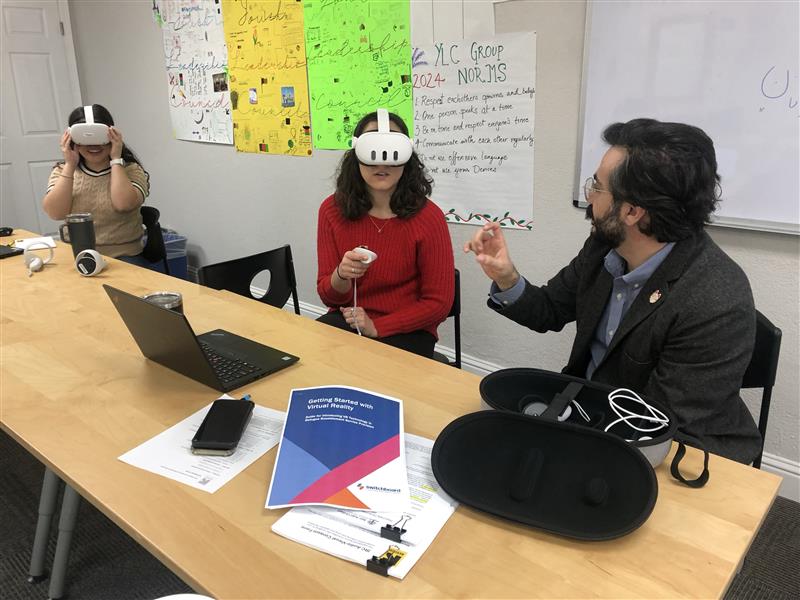
Their Youth and Education Program Manager, Ashley Crandall, is one of several service providers to have reached out for technical assistance (TA) related to the possibilities of VR technology—in this case, to increase school readiness outcomes for refugee youth. The IRC team leveraged what’s known as the co-creation design method to film a VR 360 module, an immersive video where a view in every direction is recorded at the same time using a 360 camera, for newcomer youth and caregivers in Sacramento navigating school orientation.
The Co-creation Design Workshop
Co-creation is defined by putting newcomers at the center of the design process, enabling more accessible and innovative products. Greater community input from the outset is key to fostering mutually supportive integrations of content and technology. The co-creation process can look different in different settings.
To learn more about the stages of the co-creation method, please reference the “The Eight Stages of Co-creation” blog and “Getting Started with Virtual Reality Toolkit” on the Switchboard website.
For this TTA, it began with an interactive workshop including three Afghan youth leaders, three IRC staff, three Switchboard trainers, and one subject matter expert on multi-disciplinary design. The goal of the workshop was to collectively develop a storyboard depicting the essential information a newcomer youth and their caregiver would need to feel oriented to school in the U.S. Then, the storyboard was enacted and recorded as a video, which would eventually be turned into a VR experience. The team took an exploratory trip to Mira Loma High School, Sacramento, CA, a local school that graciously offered access to their campus for filming while connecting us with teachers and students. The workshop lasted a little over two hours and took shape in the following phases:
Phase One
This initial phase sets the stage by sharing learning objectives, reviewing how to use VR technology, and revisiting previous research the group conducted.
- Introductions and Icebreakers: The workshop began with a time to connect and foster a sense of community, creating a safe space for sharing.
- Sharing Learning Objectives: Participants then reviewed the two main goals of the workshop: 1) to develop familiarity and confidence with co-creative product development methodology, and 2) to incorporate group influence into the storyboarding and filming processes.
- Introduction to VR Technology: Facilitators provided VR headsets and 360 cameras for participants to use and interact with, familiarizing them with the technology.
- Ideation and Insights: The group revisited insights gathered from the pre-trip listening session. They watched a 360 high school video of a walkthrough of a local high school developed by the Salt Lake City IRC office, generating feedback on what worked well and what needed improvement or adaptation for a Sacramento-specific high school, based on their own lived experience.
All the ideas were included in a Miro board, an online whiteboard to visualize ideas, and the group started to identify common themes, patterns, and overarching concepts. Together, participants distilled these ideas down into five or six main insights. To support this process visually, the team projected a map of Mira Loma High School on a whiteboard—then, the youth leaders took turns identifying essential spaces in the school that needed to be included in the video, while also flagging essential information about those spaces to be conveyed in each scene.
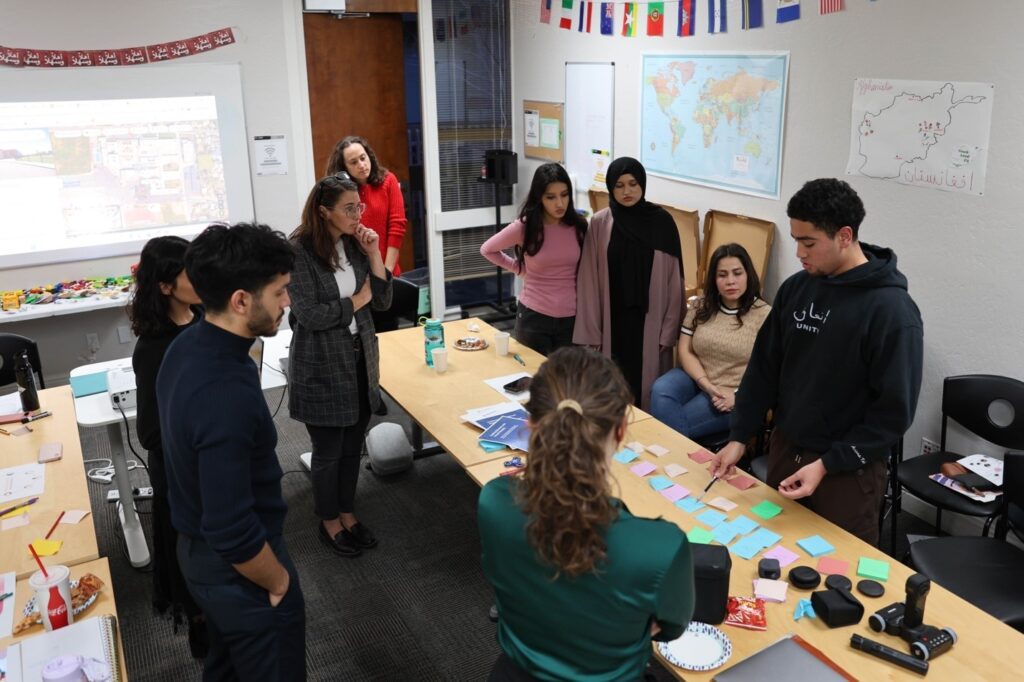
Phase Two
To make the group’s ideas more tangible, they needed to make something physical: a Community Prototype. Facilitators provided resources to do this, including sticky notes, art supplies, and computers. The workshop followed a “build-share-reflect” framework, emphasizing collaboration, creativity, and reflection.
- Step 1: In two mixed groups of youth, service providers, and trainers, the teams used sticky notes to map out a rough prototype that told a story of the immersive school experience scene by scene.
- Step 2: Using the visual scenes from step one, the team began building a storyboard for the immersive film shoot, depicting all the essential information needed to ensure the shot captured the insights and collective wisdom of the workshop participants.
The room was energized, and everyone’s voices were included, with all participants contributing from their own experiences and backgrounds. A major theme was the need to use Dari and Pashto narration and text in the video to increase accessibility. The IRC Sacramento office is unique in that it resettles, almost exclusively, Afghans. Having an accompanying script with the video would increase accessibility for Afghans, and potentially other language communities, in the future.
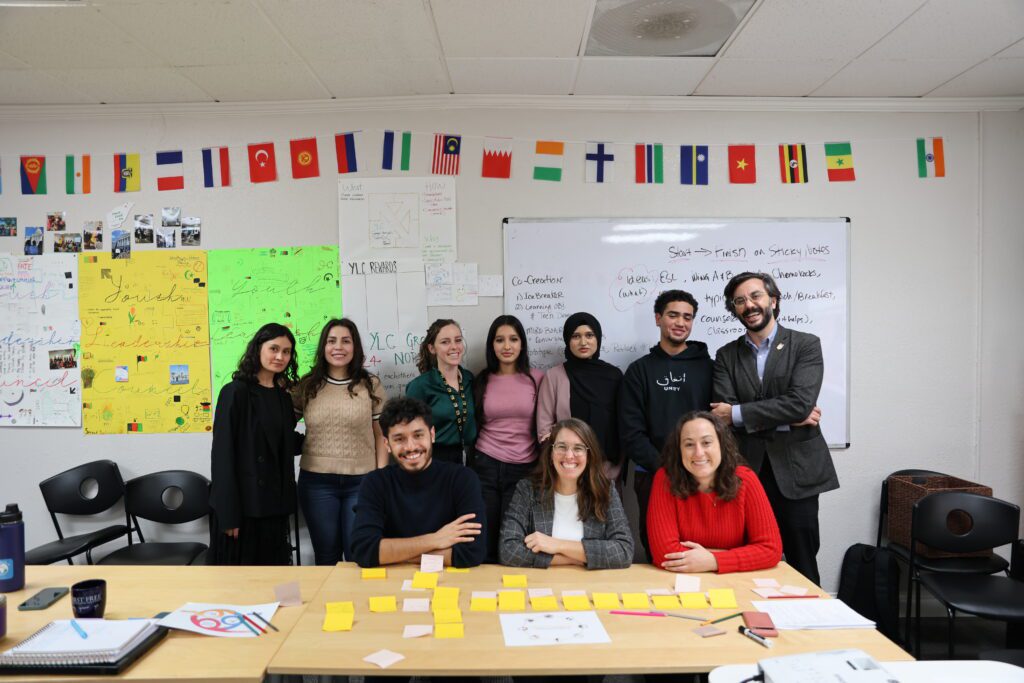
Filming the Immersive Experience
Over the course of three days, representatives from the co-creation workshop began to film what they had set out on the storyboard. All students involved had their parents sign photo release waivers to participate with both Mira Loma and IRC. Student leaders provided support as film crew members and “actors” throughout the day’s scenes.
One of the student leaders, Tayeeb, came to Mira Loma from a different high school to demonstrate a typical day in gym class. He jumped right into drills across the football field with a group of students he had never met. After filming, Tayeeb sent the team a heartfelt text about why creating this helpful educational material was important to him: “As someone who was new to the country and thrown into a classroom, I understand the unfamiliar feeling.”
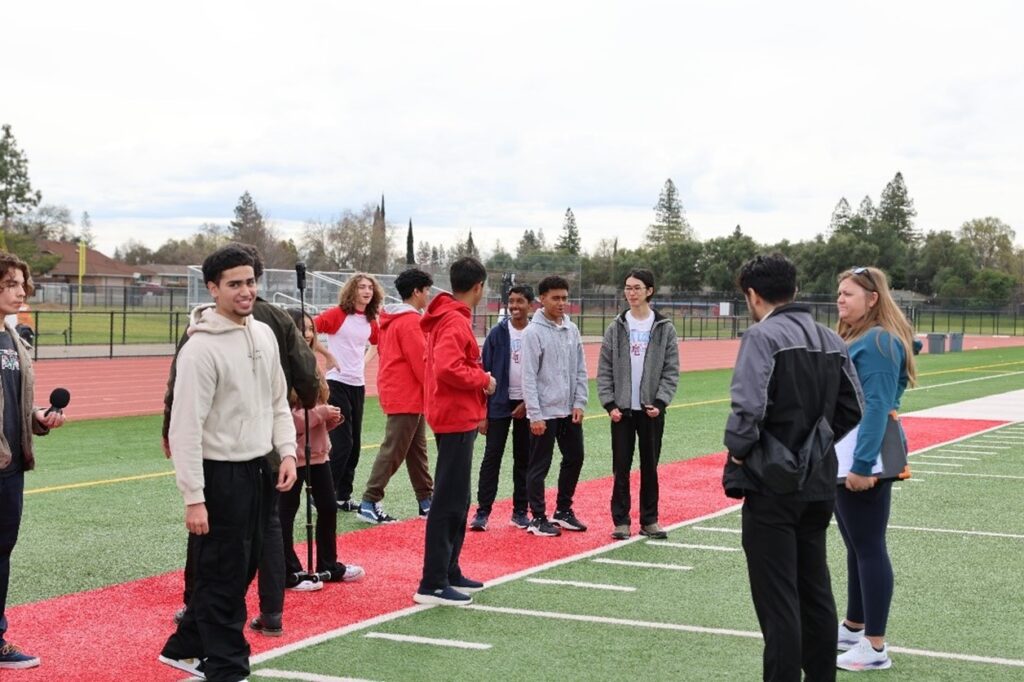
Haniya and Ali, two youth leaders originally from Afghanistan, worked with a member of the Switchboard team with similar lived experience to craft a script accompanying the video. This group became team scribes, taking copious notes on all the essential information needed to ensure the video and script were linguistically and culturally appropriate.
“The collaborative co-creation model was the strength of the TA,” said Ashley Crandall, IRC Sacramento’s Youth and Education Program Manager. “IRC needs more client voice in programming. [The local youth leader] Tayeeb was genuinely sad at the end of the filming. Even in a short amount of time, this model has huge impact.”
Over the next few months, the Switchboard team will edit the 360 immersive experience and finish the script. Once an initial edit is complete, it will be shared with the participants from the co-creative workshop for feedback. This feedback will be incorporated into the editing process. This will continue until the group collectively agrees it is ready to test with a subset of newcomers—soliciting another round of feedback to refine the video for the final school enrollment program implementation.
Reflections and Conclusion
One crucial takeaway was that the youth leaders were the experts throughout the entire process. Their insights, voices, and energy revealed their deep empathy and respect for the newcomer students they were working to help. In general, this work is guided by youth voices, and when those voices come together with technological innovations, rigid spaces like school systems can start to feel more accessible.
Another takeaway was how the individual participants in the co-creation workshop transformed into a collective team, capable of filming a 360 video together with community partners. This team understood the goals and impact of the immersive video, as well as the importance that it emerged from and represent a collective voice.
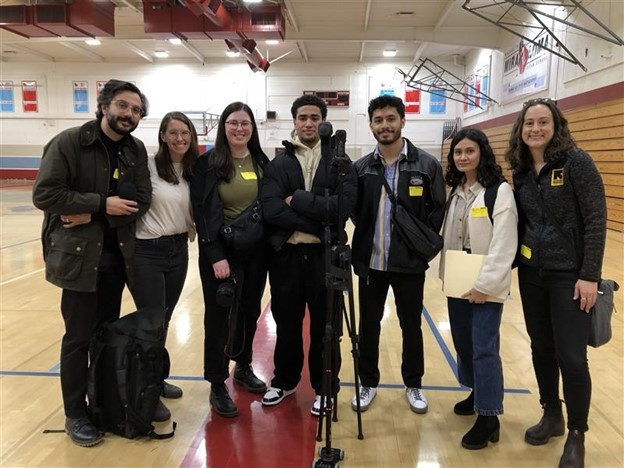
Over the coming months, this co-creative process will continue as the team contributes feedback to ongoing video edits. Switchboard will also provide supplemental training on successfully implementing VR in programming with the final media product.
If you are interested in learning more about using VR in the resettlement process, submit a TTA request here.



